Posté par Denis Dubois, le 20 juin 2015;
- Date limite : 30 septembre 2015
- Date de remise des textes : 30 mars 2016
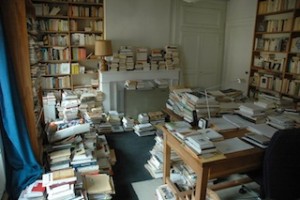 Hélio-graphie, photo-graphie, Pencil of Nature ou Sun Pictures, sont parmi bien d’autres autant de métaphores convoquées pour définir le procédé photographique au moment de son apparition. Nommée grâce à des métaphores impliquant les idées d’écriture et de lumière, la photographie n’a pas tardé à devenir elle-même un comparant privilégié et à nourrir des métaphores qui transposaient vers d’autres objets ses caractéristiques distinctives : précision, intransigeance, objectivité, instantanéité, cadrage, révélation, etc. Parmi les objets littéraires taxés à leur tour de photographiques, figure l’écriture de nombreux auteurs, qu’il s’agisse de désigner un style journalistique, l’emploi d’un certain type d’images, qu’il s’agisse encore d’évoquer l’esthétique . . . → En lire plus Hélio-graphie, photo-graphie, Pencil of Nature ou Sun Pictures, sont parmi bien d’autres autant de métaphores convoquées pour définir le procédé photographique au moment de son apparition. Nommée grâce à des métaphores impliquant les idées d’écriture et de lumière, la photographie n’a pas tardé à devenir elle-même un comparant privilégié et à nourrir des métaphores qui transposaient vers d’autres objets ses caractéristiques distinctives : précision, intransigeance, objectivité, instantanéité, cadrage, révélation, etc. Parmi les objets littéraires taxés à leur tour de photographiques, figure l’écriture de nombreux auteurs, qu’il s’agisse de désigner un style journalistique, l’emploi d’un certain type d’images, qu’il s’agisse encore d’évoquer l’esthétique . . . → En lire plus
Posté par Denis Dubois, le 14 juin 2015;
- Date limite : 30 juin 2015
- Date de remise des textes : 1er octobre 2015
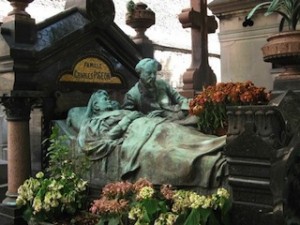 The scientific journal Annales Universitatis Apulensis Series Historica announces the call for papers for the 2nd issue of this year with the following subject: The scientific journal Annales Universitatis Apulensis Series Historica announces the call for papers for the 2nd issue of this year with the following subject:
Places of Memory. Cemeteries and Funerary Practices throughout the Time
Editors: Daniel Dumitran and Marius Rotar.
Possible Topics:
Defining the place: birth and development of cemeteries; churchyards; ossuaries; cimiterial chapels; monumental and new cemeteries; crematoria; cemetery as cultural landscape; cemetery as story(ies).
The funerary practices: inhumation; reuse of graves; cremation (including debates); disposal of the body; others.
Keeping of memory: text and image on gravestones; gravestones and family vaults as expressions of social status; . . . → En lire plus
Posté par Juliette Hernu-Bélaud, le 9 juin 2015;
Mini/Maxi. Questions d’échelles… Appel à contributions pour le n° 77 de la revue Histoire de l’art
Sous le titre « mini/maxi », la revue Histoire de l’art souhaite s’interroger sur la taille et sur l’échelle des œuvres, entre surdimensionnement colossal et miniaturisation précieuse. À partir du IIe siècle avant J.C., les textes du canon des Sept Merveilles du monde antique constituent certainement la plus connue des célébrations de ces réalisations humaines, dans lesquelles la taille gigantesque et les performances techniques que cette dernière implique jouent un rôle essentiel. Dans la littérature ancienne à leur propos et par la suite encore, la valeur accordée à l’échelle monumentale repose fondamentalement moins sur des critères esthétiques que sur l’admiration suscitée par ces prouesses techniques de l’esprit humain, tendant à rivaliser avec . . . → En lire plus
Posté par Pascale Dubus, le 6 juin 2015;
- Date limite : 12 juin 2015
- Date et lieu du colloque : 21-22 septembre 2015, Royaume Uni, Oxford
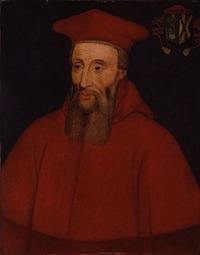 Diplomatic studies increasingly focus on the cultural and social aspects of diplomatic practice and stress the agency of individuals within international relations. Despite this, many scholars often still investigate within the parameters of national diplomatic corps or explore one end of a bilateral relationship. In contrast, this conference will focus on the cohorts of diplomats sent by different polities to the Habsburgs and Popes to explore the ways in which diplomacy fostered cultural exchange (defined broadly) at early modern courts in this crucial period for the development of the type and scope of diplomatic activity with which early modern rulers engaged. It will bring together early career scholars . . . → En lire plus Diplomatic studies increasingly focus on the cultural and social aspects of diplomatic practice and stress the agency of individuals within international relations. Despite this, many scholars often still investigate within the parameters of national diplomatic corps or explore one end of a bilateral relationship. In contrast, this conference will focus on the cohorts of diplomats sent by different polities to the Habsburgs and Popes to explore the ways in which diplomacy fostered cultural exchange (defined broadly) at early modern courts in this crucial period for the development of the type and scope of diplomatic activity with which early modern rulers engaged. It will bring together early career scholars . . . → En lire plus
Posté par Denis Dubois, le 6 juin 2015;
- Date de remise des textes : 15 novembre 2015
- Date limite : 1er juillet 2015
 Le musée est une institution chargée d’acquérir, de préserver et de transmettre ses collections. Au delà de ces fonctions historiques, le musée a également pour prérogative de valoriser sa collection auprès d’un public et de favoriser les recherches du secteur scientifique ou artistique sur le sujet. Et les fonctions muséales continuent de se développer. Ainsi, les études en prospective soulignent que le musée en 2020 seront des lieux d’expériences individuelles et collectives prenant la forme de « centres de créativité et entrepreneuriat local » (Anderson et al., 2015), ainsi que des lieux où pourrait se développer « le faire » (pratiques professionnelles et amateurs liées au hacking) (Lallement, . . . → En lire plus Le musée est une institution chargée d’acquérir, de préserver et de transmettre ses collections. Au delà de ces fonctions historiques, le musée a également pour prérogative de valoriser sa collection auprès d’un public et de favoriser les recherches du secteur scientifique ou artistique sur le sujet. Et les fonctions muséales continuent de se développer. Ainsi, les études en prospective soulignent que le musée en 2020 seront des lieux d’expériences individuelles et collectives prenant la forme de « centres de créativité et entrepreneuriat local » (Anderson et al., 2015), ainsi que des lieux où pourrait se développer « le faire » (pratiques professionnelles et amateurs liées au hacking) (Lallement, . . . → En lire plus
Posté par Olivier Bonfait, le 6 juin 2015;
- Date limite : 5 juillet 2015, 5 juillet 2015
Appel pour un numéro thématique de la revue Culture & Musées sous la direction de Dominique Poulot Le musée et le politique 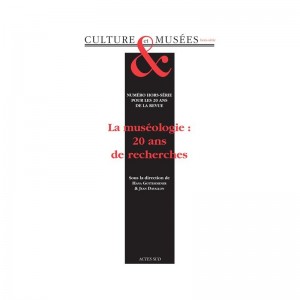 Tout au long du XIXème siècle et du premier XXème siècle, le musée s’est inscrit dans un ensemble de pratiques de contrôle, social et moralisateur : il devait consolider les vertus publiques et travailler à la prospérité industrieuse. Le musée s’inscrivait aussi dans le jeu des rivalités internationales, autant dans la crainte de déperditions patrimoniales que dans la compétition autour de nouvelles collections à former. Mais à partir des années 1960 et 1970 cet idéal a été de plus en plus vivement contesté. On a voulu mettre . . . → En lire plus Tout au long du XIXème siècle et du premier XXème siècle, le musée s’est inscrit dans un ensemble de pratiques de contrôle, social et moralisateur : il devait consolider les vertus publiques et travailler à la prospérité industrieuse. Le musée s’inscrivait aussi dans le jeu des rivalités internationales, autant dans la crainte de déperditions patrimoniales que dans la compétition autour de nouvelles collections à former. Mais à partir des années 1960 et 1970 cet idéal a été de plus en plus vivement contesté. On a voulu mettre . . . → En lire plus
Posté par Denis Dubois, le 29 mai 2015;
- Date limite : 1er septembre 2015
- Date de parution : Octobre 2015
 Pour son second numéro, la revue Phantasia poursuit son investigation de la problématique qui lui a donné naissance : la question de l’imagination. Il s’agit plus précisément de porter une attention spécifique à l’imagination sous toutes ses formes, articulée à des problèmes et des thèmes aussi variés que la conscience, la perception, l’affectivité, la corporéité, la représentation, l’image, l’expérience esthétique, le langage, la textualité, l’écriture, le politique, le social, le droit, l’histoire, la culture ou la connaissance en général. Pour son second numéro, la revue Phantasia poursuit son investigation de la problématique qui lui a donné naissance : la question de l’imagination. Il s’agit plus précisément de porter une attention spécifique à l’imagination sous toutes ses formes, articulée à des problèmes et des thèmes aussi variés que la conscience, la perception, l’affectivité, la corporéité, la représentation, l’image, l’expérience esthétique, le langage, la textualité, l’écriture, le politique, le social, le droit, l’histoire, la culture ou la connaissance en général.
Les articles publiés doivent ainsi enrichir de manière précise notre compréhension de l’imagination et de ses productions sans amoindrir sa complexité, autrement dit en . . . → En lire plus
Posté par Sébastien Bontemps, le 26 mai 2015;
- Date limite : 3 août 2015
 Anonymous: The Void in Visual Culture (Fusion Journal) Anonymous: The Void in Visual Culture (Fusion Journal)
Deadline: Aug 3, 2015 Anonymous: The Void in Visual Culture (Fusion, Issue 9, 2016)
Editors: Dr Sam Bowker, Charles Sturt University & Professor Craig Bremner, Charles Sturt University
Ever since Vasari published the ‘Vite’ in 1550, art history has been skewed in favour of named individuals whose biographies can be unveiled or re-evaluated. However, the majority of contributions to visual culture do not fit this criterion. If it is impossible to determine an artists’ name, some of the most significant cultural and commercial imperatives for new scholarship are lost. Due to related methodological prejudices, analyses primarily drawn from material culture have been reserved for ‘inferior’ contributions to visual culture. The presentation of . . . → En lire plus
Posté par Denis Dubois, le 25 mai 2015;
- Date limite : 20 juin 2015
- Date de remise des textes : 30 septembre 2015
- Date de parution : Décembre 2015
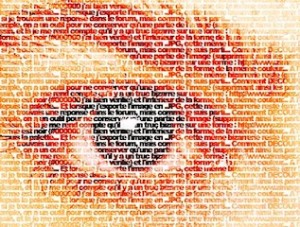 « Ut pictura poésis erit ». Cette célèbre formule d’Horace résonne lorsque l’on considère le rapport texte/image. Reprise et contestée par G. E. Lessing, elle a ensuite ouvert la voie à la dichotomie entre les arts, les jugeant incomparables vu les trois niveaux de l’opposition : la matière, le mode d’imitation et le rapport temps/espace. Rappelons à cette occasion l’étude majeure de Rensselaer W. Lee décrivant l’histoire de la transformation de la doctrine (Rensselaer W. Lee, Ut pictura poesis. Humanisme et théorie de la Peinture. XVe-XVIIIe siècles). Et pourtant, depuis Laokoon de l’écrivain allemand, bien des chercheurs et critiques ont (re ?)repensé et même (re ?)redéfini le paragone entre les . . . → En lire plus « Ut pictura poésis erit ». Cette célèbre formule d’Horace résonne lorsque l’on considère le rapport texte/image. Reprise et contestée par G. E. Lessing, elle a ensuite ouvert la voie à la dichotomie entre les arts, les jugeant incomparables vu les trois niveaux de l’opposition : la matière, le mode d’imitation et le rapport temps/espace. Rappelons à cette occasion l’étude majeure de Rensselaer W. Lee décrivant l’histoire de la transformation de la doctrine (Rensselaer W. Lee, Ut pictura poesis. Humanisme et théorie de la Peinture. XVe-XVIIIe siècles). Et pourtant, depuis Laokoon de l’écrivain allemand, bien des chercheurs et critiques ont (re ?)repensé et même (re ?)redéfini le paragone entre les . . . → En lire plus
Posté par Pascale Dubus, le 15 mai 2015;
- Date limite : 30 juin 2015
 We seek contributions for an edited volume that aims to explore how spaces, images, and objects played a powerful role in codifying and conveying messages of self-fashioning for the multifold social groups of the Medicean State. We seek contributions for an edited volume that aims to explore how spaces, images, and objects played a powerful role in codifying and conveying messages of self-fashioning for the multifold social groups of the Medicean State.
Early modern Tuscany—with the consolidation of Medici power as dukes and subsequently grand dukes, and the formation of new courtly social groups (newcomers, nobles, court officials) that fostered an increasingly ritualized society—offers an important opportunity to explore how different categories of people fashioned their identity and positioned themselves in the societal context through the display in their houses. How did artistic politics reflect, . . . → En lire plus
Posté par Denis Dubois, le 14 mai 2015;
- Date de remise des textes : 15 septembre 2015
- Date limite : 15 juin 2015

À l’occasion du centenaire du premier conflit mondial (1914-1918) le n°12 de Elephant & Castle sera consacré aux monuments de la Grande Guerre. Ce conflit majeur fut pour les pays concernés beaucoup plus tragique que prévu et suscita un nombre impressionnant de commémorations diverses ; ainsi, déjà avant 1918, toutes les nations le célébrèrent selon les formes et les modalités qui leur étaient propres. En Italie, où la guerre fut le premier évènement fédérateur pour la collectivité nationale, les premiers monuments ont été élevés sur le front, là où les soldats ont combattu de manière héroïque. L’Italie a voulu commémorer . . . → En lire plus
Posté par Denis Dubois, le 11 mai 2015;
 Jusqu’au XVIIe siècle, le thème de la pauvreté dans les arts et en littérature est dominé par un modèle évangélique. Par la suite, avec l’affirmation d’un art “réaliste” le regard des artistes abandonne progressivement la dimension allégorique (comme par exemple dans la scène du pauvre dans Dom Juan de Molière) pour dénoncer et s’opposer au progrès industriel et aux modèles de société et de ville associés. La pauvreté constitue un scandale de la raison, l’esclavage niant de fait l’idée même d’égalité. La pauvreté n’est plus prise en considération en soi, mais en opposition à la richesse, . . . → En lire plus Jusqu’au XVIIe siècle, le thème de la pauvreté dans les arts et en littérature est dominé par un modèle évangélique. Par la suite, avec l’affirmation d’un art “réaliste” le regard des artistes abandonne progressivement la dimension allégorique (comme par exemple dans la scène du pauvre dans Dom Juan de Molière) pour dénoncer et s’opposer au progrès industriel et aux modèles de société et de ville associés. La pauvreté constitue un scandale de la raison, l’esclavage niant de fait l’idée même d’égalité. La pauvreté n’est plus prise en considération en soi, mais en opposition à la richesse, . . . → En lire plus
Posté par Denis Dubois, le 28 avril 2015;
- Date limite : 15 juillet 2015
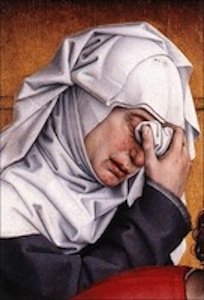 Pain, both physical and psychological, is readily sited in the body and the material. Because of its somatic basis, pain is an interior sensation whose external communication can stimulate both sympathetic and empathetic reactions in viewers. Renderings of its material consequences—be they ravaged bodies or tear-stained faces—in art have unique potential to engage viewers as psychosomatic entities and encourage affective responses.Contemporary interest in pain and its place in early modern culture has catalyzed contributions from scholars in diverse fields, including psychology, history, religion, and art history. This anthology seeks to explore the phenomenon of pain in early modern culture in Europe and . . . → En lire plus Pain, both physical and psychological, is readily sited in the body and the material. Because of its somatic basis, pain is an interior sensation whose external communication can stimulate both sympathetic and empathetic reactions in viewers. Renderings of its material consequences—be they ravaged bodies or tear-stained faces—in art have unique potential to engage viewers as psychosomatic entities and encourage affective responses.Contemporary interest in pain and its place in early modern culture has catalyzed contributions from scholars in diverse fields, including psychology, history, religion, and art history. This anthology seeks to explore the phenomenon of pain in early modern culture in Europe and . . . → En lire plus
Posté par Pascale Dubus, le 18 avril 2015;
- Date de remise des textes : 30 juin 2015
- Date limite : 30 juin 2015
 Special Issue Renaissance Studies is an interdisciplinary issue that aims at discussing the intersections and cultural interactions of a range of fields including philosophy, religion, history, art, architecture, literature, astronomy, politics, medicine, archeology, and music, during the early modern period in Italy. Special Issue Renaissance Studies is an interdisciplinary issue that aims at discussing the intersections and cultural interactions of a range of fields including philosophy, religion, history, art, architecture, literature, astronomy, politics, medicine, archeology, and music, during the early modern period in Italy.
The volume searches for contributions that investigate the vast and multifaceted scenario of the culture of the Renaissance in Italy in all its contradictions from Late Antiquity to the middle of the seventeenth century, with a special focus on the complex set of negotiations between innovative production and its tension with the past. We welcome essays that rethink, through a multidisciplinary perspective, the on going dialogue . . . → En lire plus
Posté par apahau, le 16 avril 2015;
- Date limite : 30 mai 2015
- Date de publication : Juillet 2015
 The Chitrolekha Magazine (www.chitrolekha.com) is inviting articles, essays and photo essays on the visual culture on the Indian subcontinent right from the prehistoric to the modern times. The Chitrolekha Magazine (www.chitrolekha.com) is inviting articles, essays and photo essays on the visual culture on the Indian subcontinent right from the prehistoric to the modern times.
Submissions can be made on the following topics/areas (not exclusive but suggestive):
New Perspectives on the origin of Art in the Indian Subcontinent Issues in the History of Art in the Indian Subcontinent Religious Architecture and Philosophy Aesthetics of Town-planning Paintings in the Indian Subcontinent—history, forms and evolution Sacred sculptures—interpretations of the iconographies. Religious movements and the production of art objects Theories of Art Artisans—conditions and creations Foreign influences and their incorporation Ethnography, ethnicity and . . . → En lire plus
Posté par apahau, le 13 avril 2015;
- Date limite : 30 juin 2015
- Date de remise des textes : 30 avril 2016
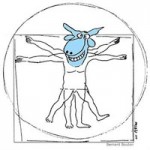 Liberté d’expression et Caricature Liberté d’expression et Caricature
Les événements tragiques de début janvier 2015 qui ont lourdement frappé l’hebdomadaire Charlie Hebdo ont suscité dans une très large part de la population française une émotion d’une ampleur inégalée. Les slogans « Je suis Charlie », « Nous sommes Charlie » sont rapidement devenus le signe de ralliement de tous les Français désireux de défendre la liberté d’expression. Mais cette belle unanimité apparente n’est pas sans poser problème : que signifie réellement cette notion de liberté d’expression, utilisée sans grande réflexion par tous, même par bon nombre de contempteurs d’une véritable démocratie ? Une fois les premières émotions passées, il est plus que jamais nécessaire, avec le . . . → En lire plus
Posté par Matthieu Lett, le 13 avril 2015;
- Date limite : 30 avril 2015
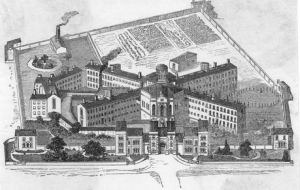 La revue Histoire pénitentiaire est éditée par la Direction de l’administration pénitentiaire. Elle est hébergée par le site Criminocorpus, plateforme d’édition scientifique en ligne pour l’histoire de la justice, des crimes et des peines. Le onzième numéro de la revue Histoire pénitentiaire est consacré au thème du patrimoine et de l’architecture carcérale. Depuis la parution en 1975 de l’ouvrage Surveiller et Punir de Michel Foucault, l’architecture carcérale et son histoire ont été l’objet d’un investissement important de la part des historiens. La lecture du Panopticon de Jeremy Bentham et sa traduction conceptuelle par le philosophe (le « panoptisme ») a mis en lumière l’incidence . . . → En lire plus La revue Histoire pénitentiaire est éditée par la Direction de l’administration pénitentiaire. Elle est hébergée par le site Criminocorpus, plateforme d’édition scientifique en ligne pour l’histoire de la justice, des crimes et des peines. Le onzième numéro de la revue Histoire pénitentiaire est consacré au thème du patrimoine et de l’architecture carcérale. Depuis la parution en 1975 de l’ouvrage Surveiller et Punir de Michel Foucault, l’architecture carcérale et son histoire ont été l’objet d’un investissement important de la part des historiens. La lecture du Panopticon de Jeremy Bentham et sa traduction conceptuelle par le philosophe (le « panoptisme ») a mis en lumière l’incidence . . . → En lire plus
Posté par Juliette Hernu-Bélaud, le 7 avril 2015;
Mini./Maxi. Questions d’échelles…
Appel à contribution pour le n° 77 de la revue Histoire de l’art
Sous le titre « mini/maxi », la revue Histoire de l’art souhaite s’interroger sur la taille et sur l’échelle des œuvres, entre surdimensionnement colossal et miniaturisation précieuse. À partir du IIe siècle avant J.C., les textes du canon des Sept Merveilles du monde antique constituent certainement la plus connue des célébrations de ces réalisations humaines, dans lesquelles la taille gigantesque et les performances techniques que cette dernière implique jouent un rôle essentiel. Dans la littérature ancienne à leur propos et par la suite encore, la valeur accordée à l’échelle monumentale repose fondamentalement moins sur des critères esthétiques que sur l’admiration suscitée par ces prouesses techniques de l’esprit humain, tendant à rivaliser avec . . . → En lire plus
Posté par apahau, le 4 avril 2015;
- Date limite : 30 mai 2015
- Date de remise des textes : Septembre 2015
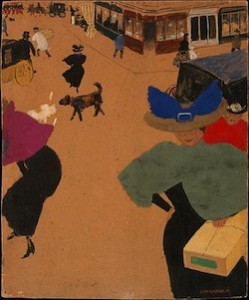 Alors même que les ouvrages sur la ville font nombre, la rue du XIXe siècle, à la fois comme espace matériel au cœur de la vie quotidienne des parisiens et des provinciaux, et comme espace imaginaire et symbolique au centre de la construction du politique, du social et du culturel, n’a pas jusqu’ici particulièrement mobilisé les historiens et les littéraires. Alors même que les ouvrages sur la ville font nombre, la rue du XIXe siècle, à la fois comme espace matériel au cœur de la vie quotidienne des parisiens et des provinciaux, et comme espace imaginaire et symbolique au centre de la construction du politique, du social et du culturel, n’a pas jusqu’ici particulièrement mobilisé les historiens et les littéraires.
L’annuaire du commerce Didot-Bottin de Paris et de la Seine commence ainsi en 1911 la publication de la liste des rues de Paris : « En 1910, Paris comptait 2653 rues, 373 passages, 302 impasses, 155 cités, 155 places, 147 avenues, 104 villas, . . . → En lire plus
Posté par apahau, le 8 mars 2015;
- Date limite : 27 mars 2015
- Date de remise des textes : 1er octobre 2015

In the disciplines of art history and visual culture, a portrait is often understood as an artistic or creative representation of a unique human subject. An emphasis is placed on visual and psychological likeness, or alternatively, on the expression of social identity. Within Western art history portraiture is indissolubly associated with the bourgeois individualism of the modern subject. Whilst recent academic scholarship within the humanities and social sciences has developed new models for theorizing subjectivity, conceptions of the portrait have failed to keep pace, and the boundaries of the genre have remained largely intact. This collection of scholarly essays makes the case for an extended . . . → En lire plus
|
Équipe Rédacteur en chef : Olivier Bonfait.
Rédacteurs : Elliot Adam (Moyen Age) ; Nicolas Ballet (XX-XXIe siècles) ; Matthieu Fantoni (musées) ; Antonella Fenech Kroke (bourses) ; Vladimir Nestorov (Lettre mensuelle)
Administrateur web : Matthieu Lett.
ancien éditeur : Pascale Dubus
anciens rédacteurs : Gautier Anceau, Sébastien Bontemps, Damien Bril ; Sébastien Chauffour ; Ludovic Jouvet ; Aude Prigot
|
 Hélio-graphie, photo-graphie, Pencil of Nature ou Sun Pictures, sont parmi bien d’autres autant de métaphores convoquées pour définir le procédé photographique au moment de son apparition. Nommée grâce à des métaphores impliquant les idées d’écriture et de lumière, la photographie n’a pas tardé à devenir elle-même un comparant privilégié et à nourrir des métaphores qui transposaient vers d’autres objets ses caractéristiques distinctives : précision, intransigeance, objectivité, instantanéité, cadrage, révélation, etc. Parmi les objets littéraires taxés à leur tour de photographiques, figure l’écriture de nombreux auteurs, qu’il s’agisse de désigner un style journalistique, l’emploi d’un certain type d’images, qu’il s’agisse encore d’évoquer l’esthétique . . . → En lire plus
Hélio-graphie, photo-graphie, Pencil of Nature ou Sun Pictures, sont parmi bien d’autres autant de métaphores convoquées pour définir le procédé photographique au moment de son apparition. Nommée grâce à des métaphores impliquant les idées d’écriture et de lumière, la photographie n’a pas tardé à devenir elle-même un comparant privilégié et à nourrir des métaphores qui transposaient vers d’autres objets ses caractéristiques distinctives : précision, intransigeance, objectivité, instantanéité, cadrage, révélation, etc. Parmi les objets littéraires taxés à leur tour de photographiques, figure l’écriture de nombreux auteurs, qu’il s’agisse de désigner un style journalistique, l’emploi d’un certain type d’images, qu’il s’agisse encore d’évoquer l’esthétique . . . → En lire plus
















